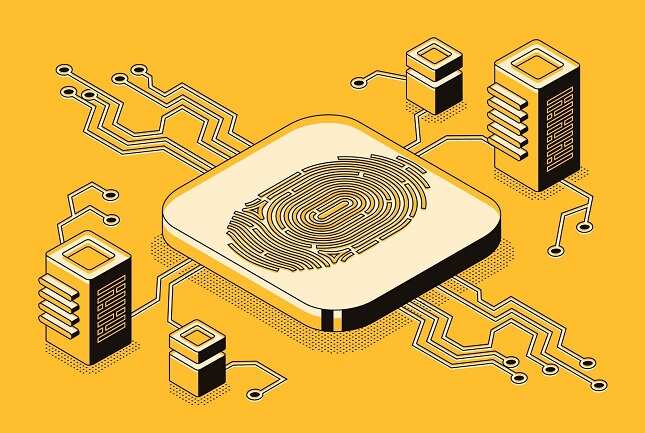Passwords have been the cornerstone of digital security for decades. From email accounts to online banking, most systems rely on a string of characters that only the user should know. But as cyberattacks grow more advanced, passwords are showing their weaknesses. Enter biometric security, where unique biological traits – like fingerprints, facial recognition, or iris scans – replace or complement passwords.
This shift brings new opportunities and risks. One of the biggest challenges in biometric authentication is spoofing – when attackers try to trick systems with fake fingerprints, photos, or deepfake videos. That’s where anti-spoofing technologies come in, reshaping the battle between traditional and biometric methods.
In this article, we’ll explore Biometric Security vs Traditional Passwords, compare their strengths and weaknesses, and explain how anti-spoofing changes the game for modern authentication.
Why Traditional Passwords Are Losing Ground
Passwords are simple in design but fragile in practice. Users often reuse them, write them down, or choose weak combinations like “123456.” According to a 2025 Verizon Data Breach Investigations Report, 88% of hacking-related breaches involved stolen or weak passwords.
Some key drawbacks of passwords include:
- Human error: Users forget complex passwords or fall for phishing attacks.
- Reusability: Many people use the same password across multiple accounts, multiplying risk.
- Brute-force vulnerability: Attackers use automated tools to guess millions of combinations in minutes.
- No link to identity: A password only proves you know the code, not that you are the rightful user.
Clearly, while passwords remain widely used, their role as a sole security measure is shrinking.
What Makes Biometric Security Different
Biometric authentication ties security to something you are, not something you know. Common types include:
- Fingerprints – Widely used in smartphones.
- Face recognition – Growing in mobile devices, airports, and border security.
- Iris and retina scans – High-accuracy methods in government and defense.
- Voice recognition – Used in call centers and IoT devices.
Unlike passwords, biometrics cannot be forgotten or easily shared. They are convenient – just a touch or glance – and provide a stronger tie to identity. However, biometric systems also face challenges:
- Privacy concerns about storing biometric data.
- Spoofing risks, such as fake fingerprints or deepfake videos.
- Hardware dependency, since biometric sensors add costs.
Biometric Security vs Traditional Passwords: A Side-by-Side Comparison
Here’s a quick comparison of the two approaches:
| Feature | Traditional Passwords | Biometric Security |
| Authentication Basis | Knowledge (something you know) | Biological traits (something you are) |
| Convenience | Requires memory, typing | Fast and frictionless |
| Security Risks | Weak/reused passwords, phishing, brute force | Spoofing, data leaks, hardware attacks |
| Scalability | Easy to implement, low cost | Needs specialized sensors, storage systems |
| Identity Verification | Weak – anyone with the password can log in | Strong – harder to fake identity |
| Recovery Options | Can reset password | Biometric data is permanent |
This comparison shows why biometric security often feels more future-proof – but only when supported by strong anti-spoofing measures.
How Anti-Spoofing Works
Anti-spoofing refers to techniques that detect and block fake biometric inputs. Modern systems use a mix of hardware and software defenses:
- Liveness detection – Ensures the biometric comes from a living person (e.g., detecting blood flow in a fingerprint or blinking in facial recognition). Independent labs such as iBeta conduct rigorous testing of biometric liveness detection systems to ensure compliance with international standards.
- Multi-modal biometrics – Combining two or more biometric types, like face + voice, to reduce spoofing risk.
- Challenge-response systems – Asking the user to perform an action (e.g., turning head, speaking a phrase).
- AI-driven analysis – Using machine learning to detect subtle differences between real and fake inputs, such as micro-textures in skin.
The growing field of presentation attack detection (PAD) aims to stop hackers before they gain access.
Spoofing: The Hidden Weakness of Biometrics
If biometrics are so secure, why do they need anti-spoofing? The answer lies in spoofing attacks.
Spoofing happens when attackers present fake biometric samples to fool the system. For example:
- Using 3D-printed fingerprints to unlock a phone.
- Showing a photo or video to bypass face recognition.
- Playing a recorded voice to trick voice authentication.
- Deploying deepfake videos that imitate real users.
Unlike passwords, which can be reset, biometric data is permanent. If your fingerprint template is leaked, you can’t “change” your finger. That’s why anti-spoofing technologies are critical.
Chart: Spoofing Risks in Different Authentication Methods
Here’s a simplified chart comparing spoofing risks:
Passwords are vulnerable to guessing but not spoofing in the biometric sense. Biometric methods, on the other hand, face higher spoofing risks, which makes anti-spoofing safeguards essential.
Industry Adoption and Real-World Examples
Biometric security isn’t just for smartphones anymore. It’s spreading across industries:
- Banking & Finance – Biometric authentication in mobile banking apps improves trust.
- Airports & Border Control – Face recognition speeds up check-ins but requires anti-spoofing to prevent identity fraud.
Healthcare – Patient identification systems use biometrics to reduce errors. - Workplaces – Secure access to buildings and systems with fingerprint or face scans.
For example, Mastercard piloted “selfie pay” – a biometric payment system that uses face recognition with liveness detection. Meanwhile, airports like Singapore’s Changi have rolled out biometric immigration gates with anti-spoofing cameras.
What the Future Looks Like
The future of authentication likely won’t be passwords OR biometrics, but a hybrid of both, enhanced with anti-spoofing. Concepts like multi-factor authentication (MFA) already combine:
- Something you know (password or PIN).
- Something you have (smartphone, token).
- Something you are (biometric trait).
With machine learning powering advanced spoof detection, biometric systems are getting smarter. The biggest challenge ahead will be balancing convenience, privacy, and security.
Conclusion
When comparing Biometric Security vs Traditional Passwords, the takeaway is clear:
- Passwords are cheap and familiar but highly vulnerable.
- Biometrics provide stronger identity verification but face spoofing threats.
- Anti-spoofing technology is the game-changer that makes biometrics reliable at scale.
For early-career ML practitioners and students, this is a field full of opportunities—from developing liveness detection algorithms to building multi-modal biometric systems. As digital identity continues to evolve, anti-spoofing will be at the heart of the next generation of security.





































